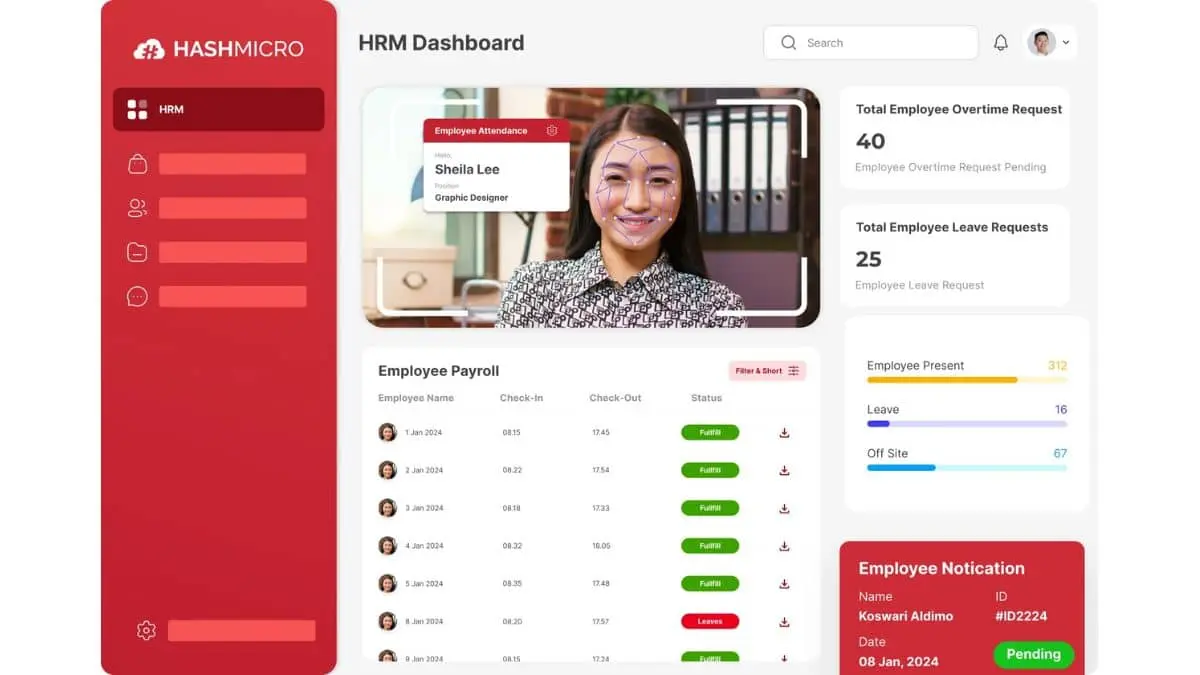Managing payroll deduction may seem straightforward, but many businesses face challenges when balancing accuracy and efficiency. With various mandatory and optional deductions, keeping track of them all can be a headache.
Payroll errors, especially in the area of employee tax deductions and post-tax deductions, can quickly lead to dissatisfied employees and costly penalties. Managers must ensure that all deductions are correctly calculated and communicated transparently.
For instance, in the Philippines, government-mandated deductions such as SSS, PhilHealth, and Pag-IBIG are crucial for businesses to adhere to. A study by the Philippine Institute of Development Studies found that non-compliance with these deductions can cost businesses significantly in fines and reputational damage.
To help you navigate these challenges, we’ll guide you through the types of payroll deductions and payroll software solutions to streamline your payroll process. Keep reading to learn how you can manage deductions with ease and stay compliant.
Table of Content
Content Lists

Key Takeaways
|
What is Payroll Deduction?
Payroll deduction refers to any amount automatically subtracted from an employee’s salary before they receive their paycheck. These deductions can include taxes, benefits, or retirement contributions, and they help employers comply with legal requirements.
The meaning of the salary deduction can vary depending on the type of deduction in question, such as mandatory deductions like taxes or social security. Employee tax deduction is a common example, where the employer withholds a portion of the salary to cover income tax obligations.
While some deductions are required by law, others are voluntary, such as contributions to retirement savings plans. Regardless, both employee deduction types ensure that employees meet their financial obligations, creating a smoother payroll process.
What are Common Types of Payroll Deductions?
Before discussing the different types of payroll deductions, it’s essential to understand their significance in ensuring employees’ tax compliance and financial security. Each deduction serves a specific purpose, whether it’s meeting government requirements, contributing to retirement plans, or supporting voluntary benefits.
Now, let’s explore the common types of payroll deductions and how they work:
1. Pre-tax deductions
Pre-tax deductions are amounts taken from an employee’s paycheck before taxes are calculated. These deductions lower the employee’s taxable income, potentially reducing their overall tax liability.
Standard pre-tax deductions include contributions to health insurance, retirement plans, and group term life insurance. While these deductions are not mandatory, they offer employees significant savings on taxes, and participating in them can be a financial advantage.
2. Income taxes
Income tax is a mandatory deduction that governments impose on individuals and businesses based on their earnings. Employers are responsible for deducting income taxes from an employee’s paycheck based on their income and the number of allowances claimed.
These funds contribute to government services and public welfare programs. Accurate employee tax deductions are essential to avoid any legal or financial issues during tax filing.
3. Statutory deductions
Statutory deductions are mandatory payments required by the government, often for public services like Social Security and healthcare. These deductions are separate from income taxes but are equally essential for funding social programs and employee benefits.
Statutory deductions ensure that workers have access to vital services and future retirement benefits. Employees don’t have a choice in these deductions, as they are compulsory under government law.
4. Post-tax deductions
After all mandatory deductions are made, post-tax deductions are subtracted from an employee’s net income. Unlike pre-tax deductions, these do not reduce the employee’s tax liability.
Examples of post-tax deductions include court-ordered child support, disability insurance, and charitable contributions. While employees can opt out of most post-tax deductions, wage garnishments are typically mandatory.
5. Voluntary deductions
Employees may choose to participate in voluntary deductions for benefits that go beyond mandatory coverage, such as additional retirement savings or supplemental insurance. Depending on the type of benefit, these deductions may be pre-tax or post-tax.
Employees need to understand the full scope of voluntary deductions to manage their take-home pay effectively. Tracking these deductions helps maintain payroll accuracy and ensures that the proper amounts are withheld.
By keeping these categories organized and accurate, HR can ensure smooth payroll processing and maintain employee satisfaction. Tools like an online pay stub generator help ensure that all deductions are accurately calculated and transparently communicated to employees.
How Payroll Deductions Work

Payroll deductions allow employees to automatically allocate a portion of their salary toward recurring expenses or investments. For example, employees often set up salary deductions to contribute a percentage of their income to an Individual Retirement Account (IRA) or Roth IRA, ensuring consistent savings for the future.
In addition to retirement contributions, employee deductions can also cover regular payments such as insurance premiums. By setting up these automatic deductions, employees guarantee that their insurance is always paid on time, minimizing the risk of missed payments and ensuring financial stability.
Some payroll deduction plans even allow employees to purchase company stock through a voluntary payroll deduction. In this case, employees can opt into their employer’s stock purchase plan, using a portion of their salary to acquire shares, often at a discounted rate, making it a great investment opportunity.
How do Payroll Deductions Affect Net Pay?

Payroll deductions directly reduce an employee’s gross pay, resulting in a lower net pay amount. These deductions can include mandatory deductions like taxes, which are required by law, as well as voluntary deductions for benefits like insurance or retirement contributions.
The salary deduction meaning refers to these subtractions from the gross pay before an employee receives their final paycheck. For example, employee tax deductions such as federal and state taxes are withheld to comply with tax laws, affecting the total net income.
Additionally, while employee deductions like retirement contributions may reduce take-home pay, they contribute to long-term financial benefits. By participating in these deductions, employees ensure timely payments for necessary services and can build savings for the future.
What is The Impact of Payroll Deductions on Employees?

Before delving into the specific impacts of payroll deductions on employees, it’s essential to recognize how these deductions influence their overall financial situation. While some deductions are necessary for legal and financial reasons, others provide valuable benefits.
Let’s now explore the different ways payroll deductions affect employees:
- Reduced take-home pay: Payroll deductions reduce the gross pay employees receive as their salary deduction is subtracted from the total earnings. This impacts their net pay, meaning they take home a smaller amount than their initial salary.
- Tax compliance and financial security: Employee tax deductions ensure that employees comply with government tax laws by automatically withholding necessary amounts. These deductions help employees manage their taxes efficiently, reducing the risk of underpayment at the end of the year.
- Contributions to benefits and savings: Certain employee deductions, like those for retirement savings or health insurance, provide long-term financial benefits. While they reduce short-term pay, they secure employees’ futures by contributing to essential benefits and savings.
- Increased payroll transparency: Understanding salary deduction meaning helps employees track where their money goes, providing clarity and transparency. Clear deductions contribute to better financial planning and ensure that employees are aware of their contributions toward benefits and taxes.
How to Calculate Payroll Deductions

To calculate payroll deductions, start by deducting any pre-tax deductions from the employee’s gross income. These include contributions to insurance or retirement plans, and they reduce the employee’s taxable income, which is the amount used to determine their employee tax deduction.
The formula for this step is:
Taxable Income = Gross Income – Pre-tax Deductions
Next, once the pre-tax deductions are subtracted, the employee’s taxable income is determined, and this forms the basis for tax withholding. This includes mandatory deductions like federal, state, and municipal taxes, as well as Social Security and Medicare withholdings that are necessary to ensure compliance with tax laws.
These taxes are calculated based on the taxable income derived from the previous step. Finally, subtract any post-tax deductions from the remaining amount, such as wage garnishments, union dues, or Roth IRA contributions.
The formula for this is:
Net Income = Gross Income – Pre-tax Deductions – Employee Tax Deductions – Post-tax Deductions
The result is the employee’s net income, which reflects their take-home pay after all employee deductions have been made, and it should be clearly shown on their paycheck.
How HashMicro’s HRM Software Enhances Payroll Deduction Management for Your Business

HashMicro provides a comprehensive HRM software solution to help businesses manage payroll deductions more efficiently and accurately. One key feature is the automation of payroll deduction calculations, which ensures compliance with tax regulations and employee benefit contributions while reducing manual errors.
Experience the power of HashMicro’s HRM software through a free demo. Discover how automation simplifies payroll deduction management, enhances accuracy, and ensures timely processing for both mandatory and voluntary deductions.
Why choose HashMicro? Our HRM software automates critical payroll deduction tasks, such as tax withholding, insurance contributions, and retirement savings, improving operational efficiency. Its seamless integration with other business modules provides a holistic solution for businesses focused on optimizing payroll processes.
It helps organizations ensure compliance with tax regulations and employee benefit programs while maximizing efficiency and minimizing errors. Below are some of the key features of HashMicro’s HRM Software for payroll deduction management:
- Fully Localized Payroll with Tax Calculation: This feature ensures that payroll complies with local tax regulations by accurately calculating taxes. It adjusts payroll deductions according to the specific tax laws of the region.
- Daily Worker, Hourly Worker Payslip Management: It automatically calculates and generates payslips for daily and hourly workers based on their worked hours. This ensures accurate pay distribution for different types of employees.
- Built-in Professional Templates for Contract & Payslip: The system provides pre-designed templates for contracts and payslips, ensuring consistency and professionalism. These templates can be customized for each employee’s specific needs.
- In-depth Leaves Management with Carryover and Expiry: This feature tracks employee leave balances, allowing for carryovers and expiry of unused leave. It simplifies leave management by automatically updating and alerting when leave entitlements are nearing expiration.
- In-depth Overtime Management Linked with Attendance and Payroll: Overtime hours are automatically recorded and integrated with the attendance system, ensuring accurate payroll processing. This feature ensures employees are paid correctly for any overtime worked.
- Employee Loan Management: The system tracks and manages employee loans, including repayments and outstanding balances. It ensures that loan deductions are accurately reflected in the payroll.
- Employee Probation Management: This feature monitors employee probation periods and automates the evaluation process. It helps HR departments track performance and decide on permanent employment status.
- Complete Overtime Management Linked with Attendance and Payroll: It tracks employee overtime hours and integrates them with attendance data to ensure proper compensation. This reduces payroll errors related to overtime payments.
- In-depth Expense Management with Budgeting per Job Position: The system allows businesses to manage employee expenses based on job roles and positions. It helps allocate budgets and track spending to avoid overspending.
- In-depth Leaves, Payroll, Expenses, Overtime, and Attendance Reporting: It generates comprehensive reports covering all aspects of payroll and employee management. These reports provide valuable insights to improve decision-making and ensure compliance with internal policies.
These capabilities improve payroll accuracy, reduce compliance risks, and streamline employee benefit management. With HashMicro’s HRM software, businesses can enhance payroll operations, improve accuracy, and drive long-term financial efficiency.
Conclusion
Payroll deductions play a crucial role in ensuring employees receive the benefits they deserve, from healthcare to retirement savings. While the calculation and management of these deductions can be complex, using the right software can significantly improve efficiency and accuracy, particularly for businesses in the Philippines.
HashMicro offers comprehensive Human Resource Management (HRM) Software that simplifies payroll deductions and automates HR functions. With our HRM solution, your company can easily manage payroll processes while boosting overall operational efficiency.
Ready to optimize your payroll management? Sign up for a free demo of HashMicro’s HRM Software today and experience how it can streamline your HR processes.





































